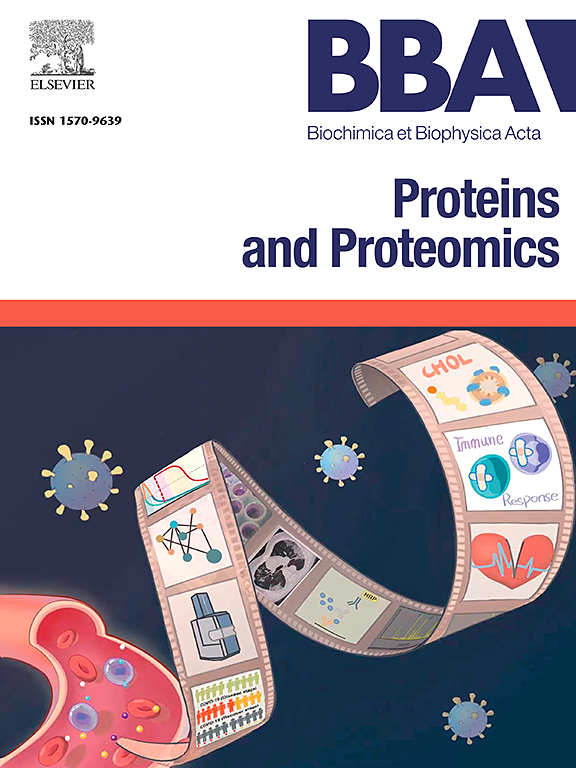Computing pathogenicity of mutations in human cytochrome P450 superfamily
IF 2.3
4区 生物学
Q3 BIOCHEMISTRY & MOLECULAR BIOLOGY
Biochimica et biophysica acta. Proteins and proteomics
Pub Date : 2025-05-09
DOI:10.1016/j.bbapap.2025.141078
引用次数: 0
Abstract
Cytochrome P450 (CYPs) are crucial heme-containing enzymes that metabolize drugs and endogenous compounds. In humans, 57 CYP isoforms have been identified, with over 200 mutations linked to severe disorders. Our comprehensive computational study assessed the reason for the pathogenicity of mutations by comparing pathogenic and non-pathogenic variants. We analyzed 25,94,151 mutations across 26 CYP structures using structure- and sequence-based methods, revealing a meaningful stability pattern: non-pathogenic > all > pathogenic mutation datasets. Notably, pathogenic mutations were predominantly buried within CYP structures, indicating a higher potential for pathogenesis. We identified three key amino acid properties affected by mutations: Gibbs free energy, isoelectric point, and volume. Furthermore, diseased mutations significantly reduced positive residue content, particularly due to arginine mutations, which directly influenced the isoelectric point. Our findings indicate a greater likelihood of pathogenic mutations occurring at conserved sites, disrupting CYP function. A higher frequency of pathogenic mutations was observed in heme sites, primarily involving arginine, which may interfere with arginine-heme interactions. Molecular docking revealed a differential binding of heme in wild-type and pathogenic CYPs. This study provides a foundational analysis of mutation effects across multiple CYPs. It models the chemical basis of CYP-related pathogenicity, facilitating the development of a semi-quantitative disease prediction model.

计算人类细胞色素P450超家族突变的致病性
细胞色素P450 (CYPs)是代谢药物和内源性化合物的重要含血红素酶。在人类中,已鉴定出57种CYP亚型,其中200多种突变与严重疾病有关。我们的综合计算研究通过比较致病性和非致病性变异来评估突变致病性的原因。我们使用基于结构和序列的方法分析了26个CYP结构中的2594,151个突变,揭示了一个有意义的稳定性模式:非致病性>;所有的在致病突变数据集。值得注意的是,致病突变主要隐藏在CYP结构中,表明其发病可能性更高。我们确定了受突变影响的三个关键氨基酸性质:吉布斯自由能、等电点和体积。此外,患病突变显著降低了正残基含量,尤其是精氨酸突变,这直接影响了等电点。我们的研究结果表明,在保守位点发生致病性突变的可能性更大,破坏了CYP的功能。在血红素位点观察到较高频率的致病性突变,主要涉及精氨酸,这可能干扰精氨酸-血红素相互作用。分子对接揭示了野生型和致病性CYPs中血红素结合的差异。本研究提供了跨多个cyp突变效应的基础分析。它模拟了cypp相关致病性的化学基础,促进了半定量疾病预测模型的发展。
本文章由计算机程序翻译,如有差异,请以英文原文为准。
求助全文
约1分钟内获得全文
求助全文
来源期刊
CiteScore
8.00
自引率
0.00%
发文量
55
审稿时长
33 days
期刊介绍:
BBA Proteins and Proteomics covers protein structure conformation and dynamics; protein folding; protein-ligand interactions; enzyme mechanisms, models and kinetics; protein physical properties and spectroscopy; and proteomics and bioinformatics analyses of protein structure, protein function, or protein regulation.

 求助内容:
求助内容: 应助结果提醒方式:
应助结果提醒方式:


